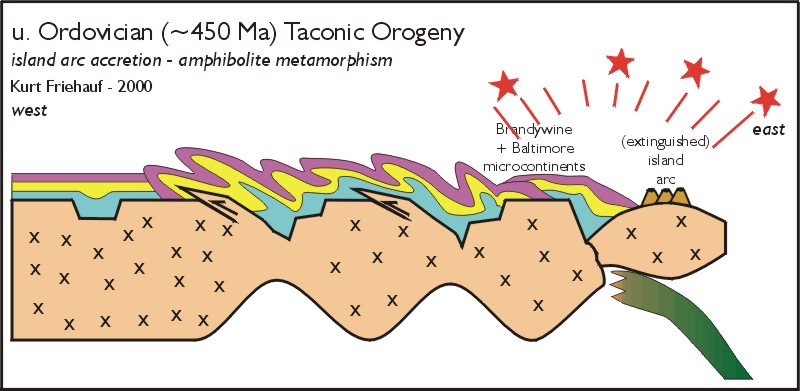Brief outline of Pennsylvania’s Geologic History
Kurt Friehauf
450 million years ago – u. Ordovician Taconic Orogeny
When one plate slips beneath the other during subduction, it has the effect of closing the gap between landmasses on either side of that ocean. Subduction in this case closed the gap between North America and the volcanic island arc to the east. Well, island arcs and microcontinents are too thick and buoyant to allow themselves to be sucked under other plates, so when the eastern ocean between North America and the volcanic island arc closed completely, the volcanic island arc collided violently with the microcontinents and North America. This collision buckled the sedimentary rocks, forming the Taconic Mountains – an event called the Taconic Orogeny. The Taconic Mountains can be thought of as the “Ancestral Appalachian” Mountains and formed right along the ancient coast in approximately the same place we see the modern Appalachians.
We see evidence for this ancient orogeny even though the mountains have long since eroded down to nubs and experienced later deformation. The evidence for the orogeny occurs in the form of “angular unconformities” – special breaks in the rock record. Angular unconformities are rock formations that form by tilting and erosion of old rocks, followed by deposition of new sediments on top of the erosion surface. The resulting rock formation looks like this:
The other evidence we see is in the difference between the ways that the older rocks are deformed compared to younger rocks. The collision of the arc didn’t just fold the rocks, rather it also cause them to fracture, forming huge thrust faults that slid deep, granitic/gneissic rocks up on top of the sedimentary rocks.

Click here to move on to the next stage